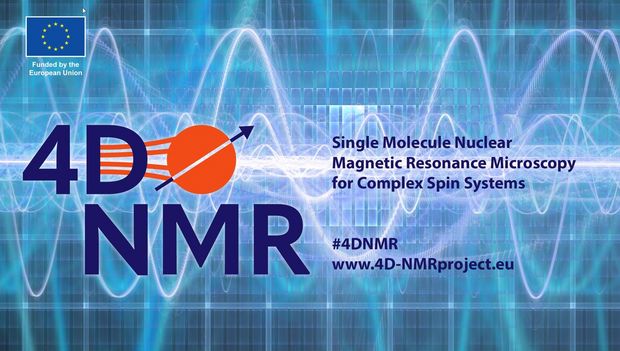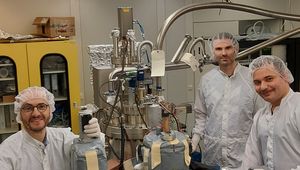When it comes to addressing various global challenges ranging from healthcare, energy, and the environment, to information technologies, nanotechnology is rapidly emerging as a pivotal area.

Researchers are still, however, studying most of the nanomaterials by applying bulk methods that average through large samples rather than studying individual nanostructures using true nanosensors. While nuclear magnetic resonance (NMR) is a critical approach in biochemical synthesis and medical imaging, it is inherently limited to large numbers of molecules. In response to this challenge, the new 4D-NMR project aims to revolutionize nuclear magnetic resonance (NMR) technology by improving its sensitivity and resolution to image single molecules at the nanoscale level. To this end, the 4D NMR team will utilize the atomic resolution capabilities of scanning probe microscopy (SPM) along with resonant, high-frequency electromagnetic excitation and readout techniques. The latter will also include significant advances in GHz and RF technology. The project brings five partners from Austria, Israel, Italy, Spain, and the United Kingdom together. The European Innovation Council's (EIC) Pathfinder program will provide over €3 million in funding over the next three years. The EIC supports research that explores bold ideas to come up with radically new technologies.
In an effort to identify the 3D chemical structures of complex molecules in three dimensions, 4D-NMR aims to advance single-molecule magnetic resonance microscopy (MRM) technologies. Technological advances in this area are expected to revolutionize NMR spectroscopy, transforming it into an imaging technique featuring sub-molecular spatial resolution. By applying synchronized magnetic pulse excitations, 4D NMR will translate the sample’s dynamics under study into the fourth dimension, which could significantly impact various fields such as the life sciences, materials science, and chemical applications in which processes involving small amounts of chemical or biological molecules need to be detected. The fact that this technology can be applied not only in vacuums but also in situ in liquids makes it particularly interesting for these fields. This constitutes a significant advantage when compared to commercial NMRs.
Dr. Georg Gramse, project coordinator at the JKU’s Institute of Biophysics, remarked: "The goal is to build a system that can operate at the single spin level in complex spin systems. The ability to resolve individual spins will allow researchers to acquire a deeper understanding of molecular interactions and processes at the atomic level, which could significantly impact a number of industries, including pharmaceuticals, materials sciences, and biotechnologies."












